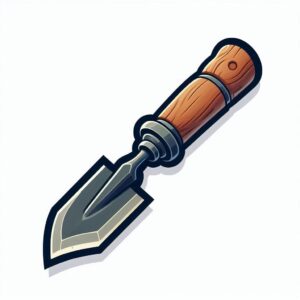



Importance of the above tools
Drill
Importance: A drill is essential in woodworking for creating holes, driving screws, and even sanding or polishing with the right attachments.
Uses:
-
Drilling Holes: Making precise holes for screws, dowels, or other fasteners.
- Example: Drilling pilot holes to prevent wood from splitting when inserting screws.
-
Driving Screws: Quickly and efficiently driving screws into wood, saving time and effort.
- Example: Assembling furniture where multiple screws are needed to hold parts together.
- Countersinking: Creating a recess for the screw head to sit flush with or below the surface of the wood.
- Example: Preparing a surface for a smooth finish when attaching hardware.
Hammer
Importance: A hammer is a fundamental tool in woodworking, used for driving nails, fitting parts, and making light adjustments.
Uses:
- Driving Nails: Securely fastening pieces of wood together.
- Example: Building a wooden frame where multiple nails are needed to hold parts together.
- Removing Nails: Pulling out nails without damaging the wood.
- Example: Reworking or disassembling parts of a wooden project.
- Shaping Wood: Using a hammer with a chisel to carve or shape wood pieces.
- Example: Creating intricate details in wood carvings or joinery.
Screwdriver
Importance: A screwdriver is crucial for tightening or loosening screws, a common fastening method in woodworking.
Uses:
- Assembling Furniture: Tightening screws to put together wooden furniture.
- Example: Securing screws in a flat-pack furniture assembly.
- Installing Hardware: Attaching hinges, handles, and other hardware to wooden projects.
- Example: Fixing cabinet hinges to doors.
- Repairing Woodwork: Tightening loose screws in existing woodwork.
- Example: Re-fastening screws in a wobbly chair.
Chisel
Importance: A chisel is used for carving, cutting, and shaping wood.
Uses:
- Carving Details: Creating detailed designs or textures in wood.
- Example: Adding decorative carvings to furniture.
- Cutting Joints: Removing excess wood to create precise joints.
- Example: Cutting out a mortise for a mortise and tenon joint.
- Trimming Edges: Smoothing or trimming rough edges.
- Example: Cleaning up the edges of a dovetail joint.
Saw (Hand Saw or Circular Saw)
Importance: Saws are used to cut wood into desired shapes and sizes.
Uses:
- Crosscutting: Cutting across the grain to shorten boards.
- Example: Trimming a board to the desired length for a project.
- Ripping: Cutting along the grain to split boards.
- Example: Splitting a board into narrower strips.
- Making Angled Cuts: Creating precise angled cuts for joints.
- Example: Cutting 45-degree angles for miter joints.

for more tools contact us